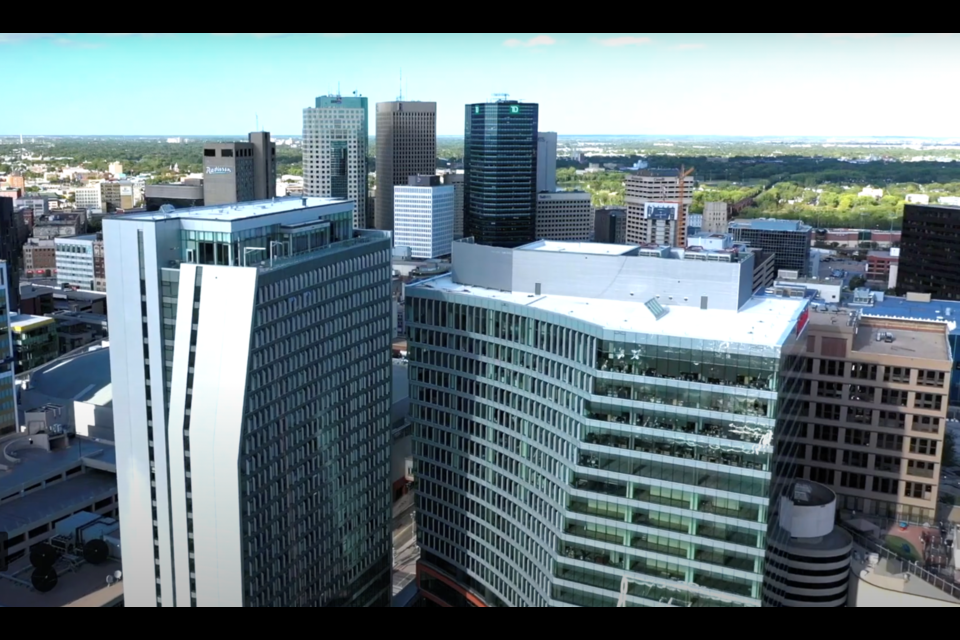This is the second of a three-part close-up on the trio of big cities in Saskatchewan and Manitoba.
Winnipeg’s overall office vacancy rate rose to 13.1 per cent in the first quarter of this year amid fears that a glut of space is growing, especially in the older Class B and C space that make up 60 per cent of the market vacancies.
Similar to other cities, Winnipeg has seen a flight to quality that’s left lower-grade office space ripe for redevelopment or conversion to other uses such as residential or hotel space.
In the first three months of this year, absorption of B and C-class offices went negative by 65,000 square feet, reports Cushman & Wakefield, which labelled the city “a tenants’ market.”
The consolidation of insurance giant Wawanesa’s offices at the new Class A True North Square complex early in 2024 is creating pressure on the market now, with CBRE Ltd. earlier this year projecting a three percentage-point increase in vacancies as a result.
Re/Max Professionals broker Taylor Toni puts the reality in stark context.
“There’s well over a million square feet of available space on the market, and we are expecting there’s going to be eight to 10 years to absorb all that,” she says.
While the return to the office has brought people back to downtown, and several leases have been renewed, Winnipeg still has a glut of space in both the core and the suburbs.
As of the Q1,there was 1.7 million square feet vacant in the central business district downtown and a further 1 million square foot empty in suburban markets.
Winnipeg has a total inventory of 22.4 million square feet of offices.
“We have this way overstock of office buildings and we don’t know what to do with it and there’s not enough tenants to go around,” Toni said, noting that landlords are offering ever greater inducements to both brokers and tenants to fill space.
“I’m seeing the highest tenant inducement allowances I’ve ever seen,” she said.
Industrial appetite
Yet the investor appetite remains strong for income-producing properties in Winnipeg, particularly industrial. Purchasers are taking a harder look at the numbers, but the second quarter started with exceptionally strong activity. In the industrial market, this spurred off-market deals because of the scarcity of listings.
Re/Max recently listed a four-unit industrial property priced according to potential income, and within three days four offers were received. A purchaser is now conducting due diligence.
“The market is good and healthy; it’s just that we need more supply,” Toni said. “For every 20 people who says they want to buy in a certain part of the city, there’s like one building.”
Demand for industrial space in Winnipeg remains strong, with the Rural Municipality of Rosser benefitting most. It holds the largest supply of vacant industrial land, effectively serving as the city’s industrial hinterland.
“One of the things that has really limited Winnipeg’s growth for a long time … we just didn’t have the industrial land supply,” said Tom Derrett, vice-president, industrial sales and leasing with Colliers in Winnipeg. “CentrePort has really changed that.”
While most projects to date have been in the 80-acre range, Vancouver-based Focus Equities is moving ahead with Centreport Rail Park on a 640-acre parcel.
“They are now bringing not only serviced land available, but a big chunk of that is going to have a railway focus.”
The plan is to create a north-south connection from Manitoba to Mexico, capitalizing on the recent merger of Canadian Pacific and Kansas City Southern. This would reorient Winnipeg, located at the centre of the continent, making it a key city for both east-west and north-south traffic.



